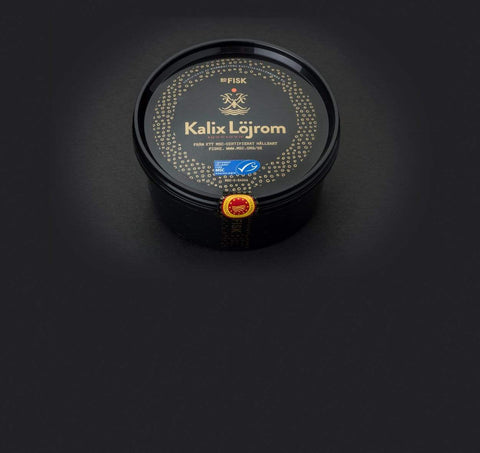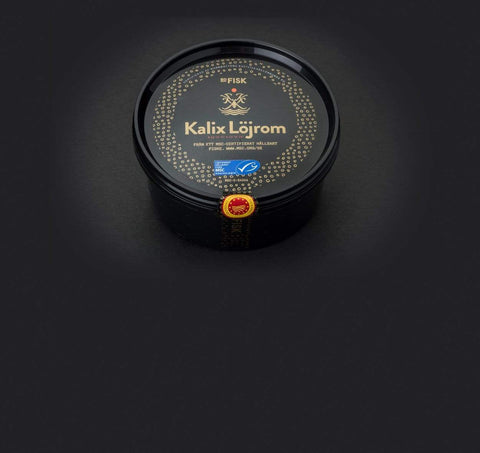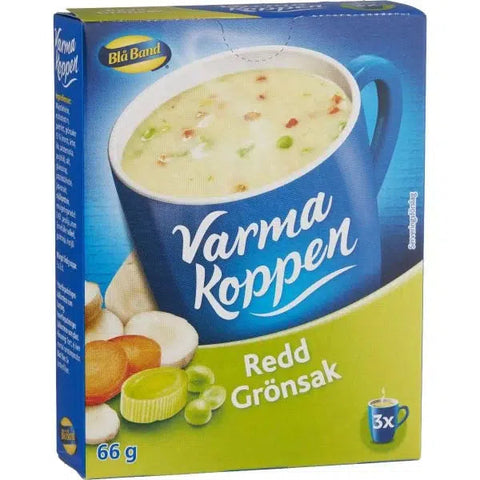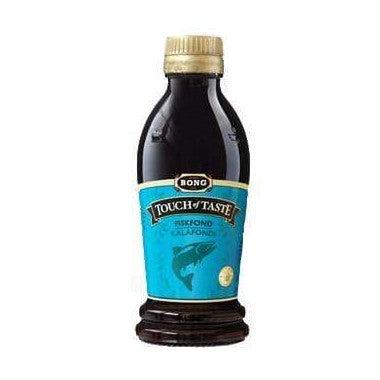

Soup Season has officially started!
There’s something universally comforting about a bowl of soup. Across the world, soups are enjoyed for their warmth, nourishment, and versatility, making them a beloved dish in countless cultures. Whether you’re cozying up with a thick, creamy soup on a chilly evening or savoring a light broth on a cold day, soups fit seamlessly into any meal.
One of the best things about soup is how flexible it can be. You can load it with your favorite vegetables, experiment with different proteins, or keep it totally plant-based. It’s easy to adjust for dietary preferences, and you can use whatever’s in season or on hand. Soups can be hearty and filling, or light and delicate, making them the perfect option no matter your mood or the weather.
Plus, soups are great for meal prepping. You can make a big batch, freeze it, and have healthy, homemade meals ready to go whenever you need them. They’re also an affordable way to eat well since you can stretch ingredients like vegetables, grains, and legumes into multiple meals. And let’s not forget, soup is a great way to stay hydrated and sneak more veggies into your diet!
Why Soups Are a Healthy Choice for Your Diet.
Soups are often considered the ultimate comfort food, but they also pack a serious nutritional punch. Studies show that people who incorporate soup into their regular diet tend to consume more vitamins, minerals, and fiber while keeping their overall calorie intake in check. The reason behind this is simple—soups are typically rich in vegetables, legumes, lean proteins, and whole grains, all of which are nutrient-dense but relatively low in calories. This makes them an excellent choice for anyone looking to eat healthier without compromising on flavor.
One of the key benefits of soups is their high water content. Staying hydrated is essential for many bodily functions, from digestion to maintaining energy levels, and broth-based soups, in particular, offer a hydrating meal that also satisfies hunger. The fluid from soup helps your body absorb nutrients more efficiently and can ease digestion, especially for those who have a sensitive stomach or are recovering from illness. Clear broth soups, such as those based on chicken or vegetable stocks, are especially helpful when you're feeling under the weather, as they provide electrolytes and support hydration without being too heavy.
Soups can also be a fantastic source of fiber, especially when they contain ingredients like beans, lentils, or whole grains. Fiber is essential for digestive health—it keeps your digestive system moving, helps regulate blood sugar levels, and even contributes to heart health by lowering cholesterol. The inclusion of vegetables and legumes in many soup recipes further boosts fiber content, making soups a great way to meet your daily fiber intake in a delicious, satisfying way.
Beyond digestion and hydration, soups also have a unique benefit when it comes to weight management. Research suggests that consuming a low-calorie soup before a main meal can help reduce overall calorie intake. This is because soups, particularly those with a base of broth or pureed vegetables, are filling due to their combination of liquid, fiber, and nutrient density. They help you feel full more quickly, leading to reduced portion sizes and fewer cravings later on. For those looking to maintain or lose weight, soups are an ideal solution—they offer a high volume of food with fewer calories, making it easier to feel satisfied without overeating.
Soups are also incredibly versatile when it comes to dietary restrictions. Whether you're vegan, vegetarian, gluten-free, or following a low-carb diet, there’s always a soup recipe that can meet your needs. You can easily swap ingredients, experiment with different broths, or adjust the thickness of the soup to suit your preferences. Plus, making soups at home allows you to pack in seasonal, fresh ingredients, offering a more nutrient-rich option compared to many processed foods.
With all these health benefits in mind—hydration, digestive support, weight management, and nutrient density—it's clear why soups deserve a place in your regular meal rotation. Now, let's explore some of the most delicious and nutritious soup recipes you can add to your menu, starting with the cozy, fall-inspired pumpkin soup.

Creamy Pumpkin Soup: A Cozy Fall Favorite
For this rich and velvety pumpkin soup recipe, we turn to one of the most beloved recipes from Minimalist Baker, known for its simplicity, yet incredible flavor. This recipe is perfect for the cooler months, offering warmth and comfort with every spoonful.
Ingredients:
1 medium pumpkin (about 2-3 pounds), peeled, seeds removed, and cut into cubes (or substitute with 3 cups of canned pumpkin purée)
2 tablespoons olive oil
1 medium onion, chopped
2-3 garlic cloves, minced
2 cups vegetable broth (or chicken broth for added richness)
1 cup full-fat coconut milk (or heavy cream if you prefer)
1 teaspoon ground cinnamon
1/2 teaspoon ground nutmeg
1/2 teaspoon ground ginger
Salt and pepper to taste
Optional garnish: Pumpkin seeds, a drizzle of coconut cream, or fresh herbs like parsley
Instructions:
Prepare the Pumpkin: If using fresh pumpkin, preheat your oven to 180°C (350°F). Spread the pumpkin cubes on a baking sheet, drizzle with olive oil, and roast for 25-30 minutes or until tender. If using canned pumpkin, you can skip this step.
Sauté the Aromatics: In a large pot, heat 2 tablespoons of olive oil over medium heat. Add the chopped onion and sauté for 5-6 minutes until soft and translucent. Then, add the minced garlic and cook for another 1-2 minutes until fragrant.
Combine Ingredients: Add the roasted pumpkin cubes (or canned pumpkin purée), vegetable broth, cinnamon, nutmeg, ginger, salt, and pepper to the pot. Stir everything together and bring it to a simmer. Let it cook for about 10-15 minutes to allow the flavors to meld together.
Blend the Soup: Using an immersion blender, blend the soup until smooth and creamy. If you don't have an immersion blender, carefully transfer the soup in batches to a blender and blend until smooth.
Add Creaminess: Stir in the coconut milk (or heavy cream) and let the soup simmer for another 5 minutes, ensuring the flavors are well combined. Taste and adjust seasoning if needed.
Serve: Ladle the soup into bowls and garnish with a drizzle of coconut cream, roasted pumpkin seeds, or fresh herbs for added texture and flavor.
Why It’s a Favorite?
This creamy pumpkin soup is not only incredibly easy to make, but it's also packed with comforting flavors like cinnamon and nutmeg that perfectly complement the natural sweetness of the pumpkin. The coconut milk adds a rich creaminess without overpowering the dish, and the garnish options allow for a beautiful and flavorful presentation. It's perfect for a cozy dinner or an elegant appetizer at a fall gathering.
Swedish Chickpea Soup (Kikärtssoppa)
For a truly authentic Swedish chickpea soup (Kikärtssoppa), we draw inspiration from Frida Ronge, a celebrated Swedish chef known for her take on Scandinavian cuisine with a focus on sustainability. This chickpea soup is simple yet bursting with the warm, comforting flavors that are central to Swedish cooking, with a delightful blend of spices and seasonal vegetables.
Ingredients:
2 cups dried chickpeas (or 1 can of chickpeas, drained and rinsed)
1 tablespoon olive oil
1 medium onion, finely chopped
2 carrots, chopped
2 garlic cloves, minced
1 teaspoon ground cumin
1 teaspoon ground coriander
1/2 teaspoon smoked paprika
1 bay leaf
4 cups vegetable broth
1 cup diced tomatoes (canned or fresh)
1 tablespoon red wine vinegar (optional for added depth)
Salt and pepper to taste
Fresh parsley or dill for garnish
Optional: A dollop of crème fraîche or sour cream for serving
Instructions:
Prepare the Chickpeas: If using dried chickpeas, soak them overnight in cold water, then drain and rinse them. Cook them in fresh water for about 1 hour, or until tender. If using canned chickpeas, simply drain and rinse them, and they are ready to use.
Sauté the Vegetables: In a large pot, heat the olive oil over medium heat. Add the chopped onion, garlic, and carrots, and sauté for 5-6 minutes until the vegetables begin to soften.
Spice it Up: Add the ground cumin, coriander, smoked paprika, and bay leaf to the pot, stirring for about 1 minute until the spices are fragrant.
Combine Ingredients: Add the cooked chickpeas, vegetable broth, and diced tomatoes to the pot. Stir everything together and bring the mixture to a gentle simmer. If you're using red wine vinegar, add it at this stage to deepen the flavors.
Cook the Soup: Let the soup simmer uncovered for 20-25 minutes, allowing the flavors to meld together and the vegetables to become tender. Season with salt and pepper to taste.
Blend to Desired Consistency: If you prefer a thicker soup, you can use an immersion blender to partially blend the soup, leaving some chunks for texture. Alternatively, leave it as a hearty, chunky soup.
Garnish and Serve: Remove the bay leaf before serving. Ladle the soup into bowls and garnish with fresh parsley or dill. For an extra touch of creaminess, add a dollop of crème fraîche or sour cream on top.
Why It’s a Favorite?
This Swedish-inspired chickpea soup is rich in protein and fiber, making it both nourishing and satisfying. The blend of cumin, coriander, and smoked paprika adds a subtle warmth, while the carrots and tomatoes bring natural sweetness to the dish. In Swedish cuisine, soups like this are often enjoyed as part of a cozy "myskväll" (cozy evening) meal, especially in the colder months.
The optional dollop of crème fraîche adds a creamy contrast that balances the smoky spices beautifully, and the use of fresh herbs like dill or parsley gives it a bright finish. This recipe is perfect for a simple yet flavorful weeknight meal or for a gathering with friends where hearty, comforting dishes are the stars.

Classic Swedish Seafood Soup (Fisk- och Skaldjurssoppa)
For a rich, flavorful seafood soup, we turn to Leif Mannerström, a legendary Swedish chef known for his mastery of traditional Swedish cuisine, especially seafood. This classic seafood soup, or Fisk- och Skaldjurssoppa, brings the fresh, briny flavors of the Nordic coast to your table, combining a variety of seafood in a creamy, aromatic broth.
Ingredients:
1 tablespoon butter
1 tablespoon olive oil
1 large onion, finely chopped
2 garlic cloves, minced
2 carrots, sliced
1 leek, sliced
1 fennel bulb, thinly sliced
2 tablespoons tomato paste
1/2 cup dry white wine
4 cups fish or seafood stock (or a mix of both)
1 bay leaf
1 teaspoon dried thyme
1 teaspoon saffron (optional, but adds a beautiful color and flavor)
1 cup heavy cream (or full-fat coconut milk for a lighter, dairy-free option)
300 grams (about 2/3 lb) firm white fish (such as cod or haddock), cut into bite-sized pieces
200 grams (about 1/2 lb) mixed seafood (such as shrimp, mussels, lobster, crayfish, or scallops)
Salt and pepper to taste
Fresh dill or parsley for garnish
Lemon wedges for serving
Instructions:
Sauté the Vegetables: In a large pot, heat the butter and olive oil over medium heat. Add the chopped onion, garlic, carrots, leek, and fennel, and sauté for about 8-10 minutes, until the vegetables are soft and the onion is translucent.
Add the Wine and Tomato Paste: Stir in the tomato paste, letting it cook for 2-3 minutes to develop the flavor. Then pour in the white wine and allow it to simmer for another 2 minutes, reducing slightly.
Simmer the Broth: Add the fish or seafood stock, bay leaf, thyme, and saffron (if using). Stir everything together and bring to a simmer. Let the broth cook for about 15 minutes to allow the flavors to blend.
Add the Seafood: Reduce the heat to low, then add the cream and stir well. Gently add the fish pieces and seafood mix, allowing them to cook in the simmering broth for about 5-7 minutes, or until the fish is opaque and the seafood is cooked through. Be careful not to overcook the seafood.
Season and Serve: Taste the soup and adjust the seasoning with salt and pepper as needed. Remove the bay leaf before serving.
Garnish and Enjoy: Ladle the soup into bowls and garnish with fresh dill or parsley. Serve with lemon wedges on the side for an extra burst of freshness, and don’t forget some crusty bread for dipping!
Why It’s a Favorite?
This Swedish seafood soup is the epitome of comfort and taste, combining delicate flavors from the sea with the warmth of fresh vegetables and herbs. The use of saffron, a hallmark of Swedish cuisine, adds a golden hue and subtle depth, while the mix of fish and shellfish provides a satisfying variety of textures and tastes. In Sweden, seafood soups are often enjoyed at festive occasions or cozy weekend dinners by the coast, bringing families together over a hearty, delicious meal. The creaminess of the broth is perfectly balanced with the briny seafood, and the fennel and leeks add a sweet, aromatic touch that complements the richness of the fish.
This recipe is inspired by the work of Leif Mannerström, a chef who has spent decades championing Swedish seafood traditions. Whether served as a main course at a dinner party or a comforting family meal, this soup is sure to impress with its authentic Nordic flavors. Serve it with crispbread (knäckebröd) or sourdough for an even more traditional experience!

Traditional Swedish Fish Soup
For a truly authentic Swedish fish soup, we look to the well-loved traditions of Swedish coastal cooking, where fresh fish is a staple of everyday meals. Inspired by Tina Nordström, a popular Swedish chef known for her accessible and traditional Scandinavian recipes, this fish soup is both light and flavorful, offering a taste of Sweden’s coastal regions.
Ingredients:
- 1 tablespoon butter
- 1 tablespoon olive oil
- 1 medium onion, finely chopped
- 1 leek, white part only, sliced
- 2 carrots, diced
- 1 fennel bulb, thinly sliced
- 2 potatoes, peeled and cubed
- 2 garlic cloves, minced
- 2 tablespoons tomato paste
- 1/2 cup dry white wine
- 4 cups fish stock (homemade or store-bought)
- 1 bay leaf
- 1 teaspoon dried thyme
- 1 teaspoon ground white pepper
- 1 cup heavy cream (or half-and-half for a lighter version)
- 500 grams (about 1 pound) firm white fish (such as cod, haddock, or pollock), cut into bite-sized pieces
- Salt and pepper to taste
- Fresh dill for garnish
- Lemon wedges for serving
Instructions:
- Sauté the Vegetables: In a large pot, heat the butter and olive oil over medium heat. Add the chopped onion, leek, garlic, carrots, and fennel, and sauté for about 8-10 minutes until the vegetables are soft and the onion is translucent.
- Add the Tomato Paste and Wine: Stir in the tomato paste and cook for 2-3 minutes to deepen the flavor. Add the white wine and let it simmer for a few minutes to reduce slightly and blend with the vegetables.
- Simmer the Broth: Add the fish stock, bay leaf, thyme, ground white pepper, and cubed potatoes. Bring the soup to a gentle simmer and cook for about 15-20 minutes, or until the potatoes are tender.
- Add the Fish: Lower the heat and stir in the heavy cream, then gently add the fish pieces. Let the fish cook in the simmering soup for about 5-7 minutes, or until it becomes opaque and flakes easily with a fork. Be careful not to overcook the fish.
- Season and Serve: Taste the soup and adjust seasoning with salt and pepper as needed. Remove the bay leaf before serving.
- Garnish and Enjoy: Ladle the soup into bowls and garnish with fresh dill. Serve with lemon wedges on the side for a bright, citrusy finish, and don’t forget some crusty bread for dipping.
Why It’s a Favorite?
This traditional Swedish fish soup is a light, comforting dish that highlights the natural flavors of fresh fish and simple vegetables. The combination of fennel and leeks adds a subtle sweetness, while the white wine and tomato paste provide depth and richness. The addition of cream balances the broth with a touch of silkiness, creating a perfect harmony of flavors.
Fish soup, or Fisk Soppa, is a beloved meal in Sweden, often served during colder months or as a starter at special occasions. In coastal towns, fish is always fresh and local, making this dish a perfect reflection of Sweden’s rich maritime heritage. The use of firm white fish like cod or haddock is traditional, as these varieties hold their shape well in soups while absorbing the flavors of the broth.

How to Incorporate These Soups Into Your Meal Rotation?
Incorporating these soups into your weekly meal rotation is not only easy but also rewarding. One of the great things about soups is their versatility—they can be made ahead of time, stored in the fridge, or frozen for future meals, making them perfect for meal prepping. Start by dedicating one or two days a week to batch cooking your soups. For example, you can make a big pot of pumpkin or chickpea soup at the beginning of the week, store it in the fridge, and enjoy it over several days. Many soups, like seafood or fish soups, taste even better the next day as the flavors continue to develop.
When planning your meals, think about using these soups as both a main dish and a complement to lighter meals. Pair a hearty chickpea or pumpkin soup with a side salad or some crusty bread for a complete meal, or serve the lighter seafood and fish soups alongside a simple Scandinavian open-faced sandwich (smörgås) for a satisfying yet not overly filling lunch. Additionally, these soups are excellent for seasonal transitions—chickpea and fish soups are great during cooler months, while seafood soups work beautifully year-round.
Soups also help in reducing food waste. Leftover vegetables or herbs can easily be added to your soups, giving you a chance to use up ingredients that might otherwise go to waste. Incorporating these soups into your meal rotation provides not only nutritious and flavorful meals but also a practical way to save time, money, and reduce waste.
Soup isn’t just food—it’s comfort in a bowl. Whether it’s a creamy pumpkin soup on a chilly night, a hearty chickpea soup after a long day, or a light seafood or fish soup that brings back memories of the coast, these dishes have a way of making life feel a little cozier. In Sweden and beyond, soup is a staple that warms both body and soul.
Adding these soups to your weekly meals is an easy way to keep things interesting, healthy, and stress-free. They’re versatile, perfect for any season, and a great way to use fresh ingredients. Whether you’re cooking for yourself or loved ones, these soups will bring warmth and satisfaction to your table every time.












































